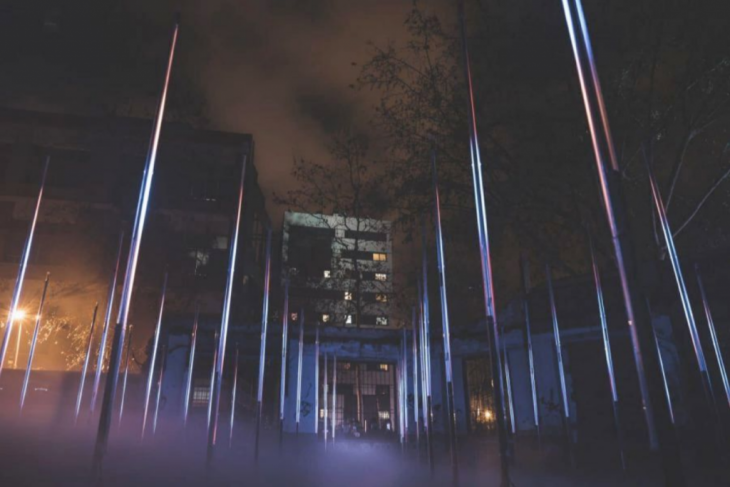IAAC – Master in Robotics and Advanced Construction
W.5 // Cross Disciplinary Project
Faculty: Pablo Ross, Cristian Rizzuti
LLUM WORKSHOP
The Llum BCN – festivalof lights is organised by the Barcelona Institute of Culture (ICUB) and takes place during the month of February to coincide with the Festival de Santa Eulalia. For three nights a part of the city is selected as the backdrop for light installations by professionals and academic institutions. The year 2021 marks the 10th edition of Llum BCN and the 7th participation of IAAC:
? 2015: Pluja de Llum
? 2016: Llum Tafanera
? 2017: Brillem en la foscor
? 2018: Playball!
? 2019: Bosc Nocturn
? 2020: Eolica
 Credits: Bosc Nocturn, IAAC LLUM Installation, 2019
Credits: Bosc Nocturn, IAAC LLUM Installation, 2019
Location
Llum includes installations from professionals, universities and institutions. The locations for the installations are selected and assigned by the ICUB. Until 2017, Llum BCN took place in the Gotico neighbourhood of Barcelona. In 2018 the festival moved to the Poblenou district: a change of location, which created a new challenge that brought new strategies of the treatment of light and space.
This year we are in an exceptional situation. The Poblenou district continues to host the Festival, but the proposals will have to adapt to this new pandemic contingency in the city. Light and creativity will fill the neighbourhood with distances and regulatory capacity, an opportunity to rethink the urban landscape and, as always, to transform us.
Syllabus
IAAC has always counted on the Llum BCN Festival as a platform for interaction research, particularly “massive interaction” and the study of a crowd of people interacting while understanding their role in the interactive system. This year we continue this research into interaction while implementing various techniques to create a compelling public installation. IAAC will formalise a light sculpture that will form part of a set of 20 pieces designed by the rest of professionals and institutions, a stage/museum of light sculptures. IAAC’s light sculpture will promote an innovative and creative practice for the co-design of inclusive, cohesive and sustainable public spaces, through the use of games and digital technologies. The project will be in fact developed in the framework of Public Play Space, a project co-funded by the Creative Europe Programme of the European Union, which aims to establish a transdisciplinary platform exploring how play and gamification tools, in combination with advanced digital
technologies, can be used to foster the process of public space co-design and placemaking, enhancing the understanding of the relationship between the space and its users. The aim of this seminar is to find creative answers to the following question: How can we collectively rethink the functioning and structure of the streets, avenues, squares and parks in accordance with new digital technologies and inclusive principles?
Learning Objectives
At course completion the student will:
1. Develop an interactive installation that has a capacity to engage multiple people
concurrently.
2. Create content that is developed by every researcher involved in the seminar.
3. Produce a professional installation by collaborating in well defined groups.
4. Employ Visual Programming, Physical Computing, Computer Vision, and other technical
strategies to achieve an interactive environment.
